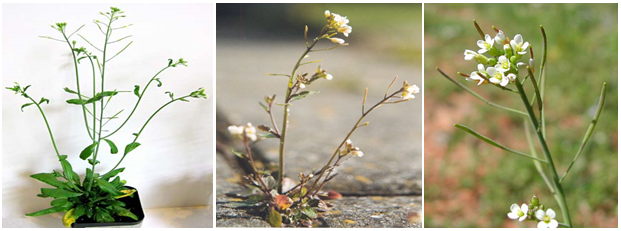Authors: Ravi Kumar, Ph.D Scholar
Department of Plant Breeding and Genetics
S.K.N. College of Agriculture, SKNAU, Jobner
Scientists commonly choose a single species to study as a representative for a broader group. This species is called a model system. Information obtained from studying the model system can be applied to related organisms as needed. The choice of a representative species is typically driven by how easy it is to obtain, grow, and manipulate, and how well it has been studied. The plant species most commonly used for molecular genetics at present is the small member of the mustard family (Brassicaceae) Arabidopsis thaliana. Thale cress is an erect annual, rarely biennial weed, native on cultivated ground, bare places, on banks, walls, rocks, and waysides.

Thale cress flowers from April to May and again from September to October, although it may be found in flower throughout the year. The flowers are automatically self-pollinated but can be cross-pollinated. Plants have been known to produce seeds just 4 weeks after emergence. Seed pods contain an average of 33 seeds. The average seed number per plant is 2,739. It is easily grown in a greenhouse or indoor growth chamber. It possesses a relatively small, genetically tractable genome that can be manipulated through genetic engineering more easily and rapidly than any other plant genome. Many crop species have large genomes, often as a result of polyploidization events and accumulation of non-coding sequences during their evolution. Maize has a genome of approximately 2400 Megabase pairs (Mbp) around 19 times the size of the Arabidopsis genome with probably no more than double the number of genes, most of which occur in duplicate within the genome. The large crop genomes pose challenges to the researcher, including difficulty in sequencing as well as in isolation and cloning of mutant loci.
Major reasons for the adoption of Arabidopsis as a model for plant molecular genetics
• Short-generation time; 8 weeks from seed to seed.
• Small (adult approximately 20cms tall), easily grown at high density in glasshouse or culture room.
• Diploid genome, making analysis of recessive mutations easy.
• Self fertilizes, so can isolate seed from a single plant without need to cross fertilize. A single plant produces hundreds or thousands of seeds.
The small size, short generation time, large number of progeny per plant, and small genome of Arabidopsis make it attractive for molecular genetic analysis.
References:-
Bevan, M. and Walsh, S. 2005. The Arabidopsis genome: A foundation for plant research. Cold Spring Harbor Laboratory Press; ISSN 1088-9051/05 (www.genome.org).
About Author / Additional Info: